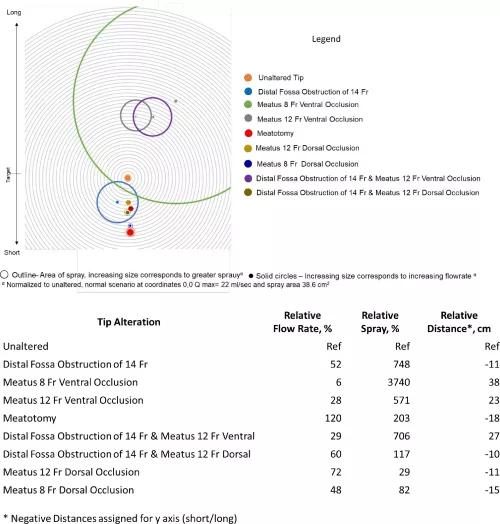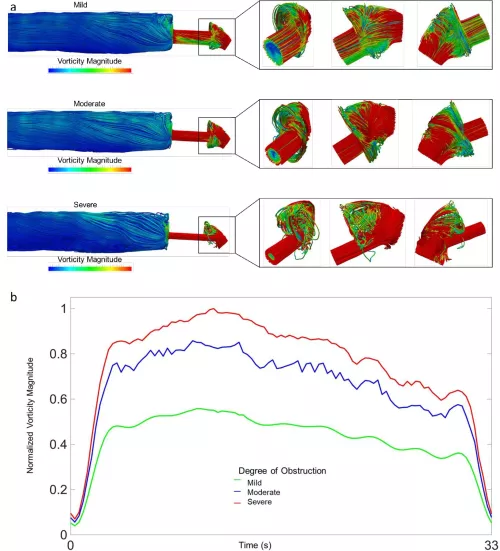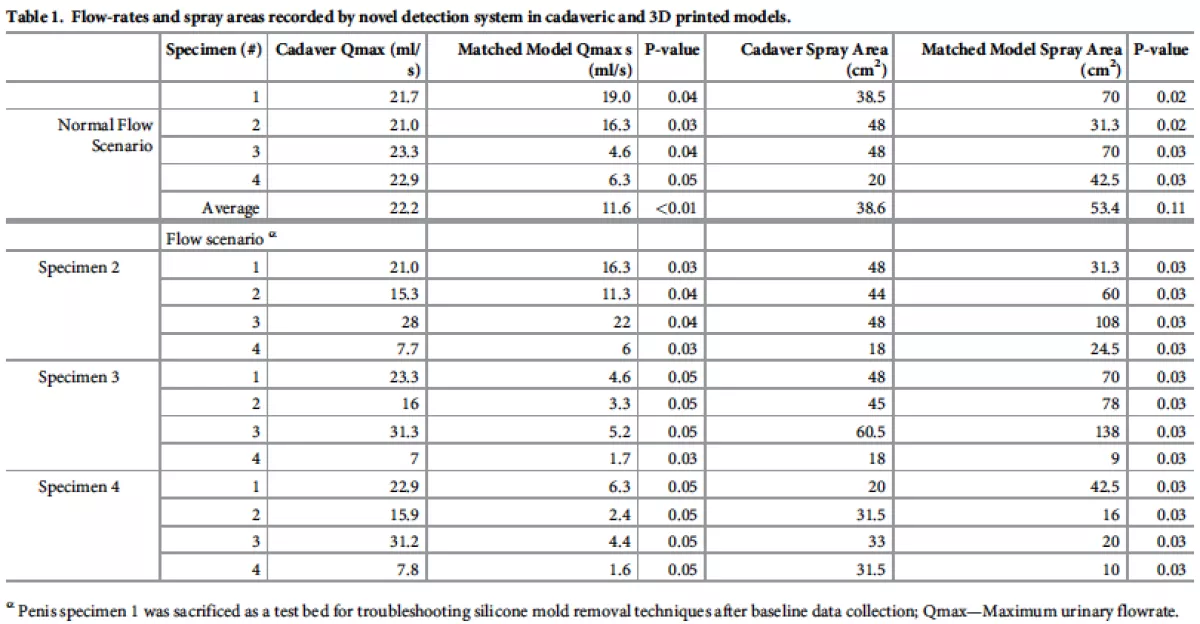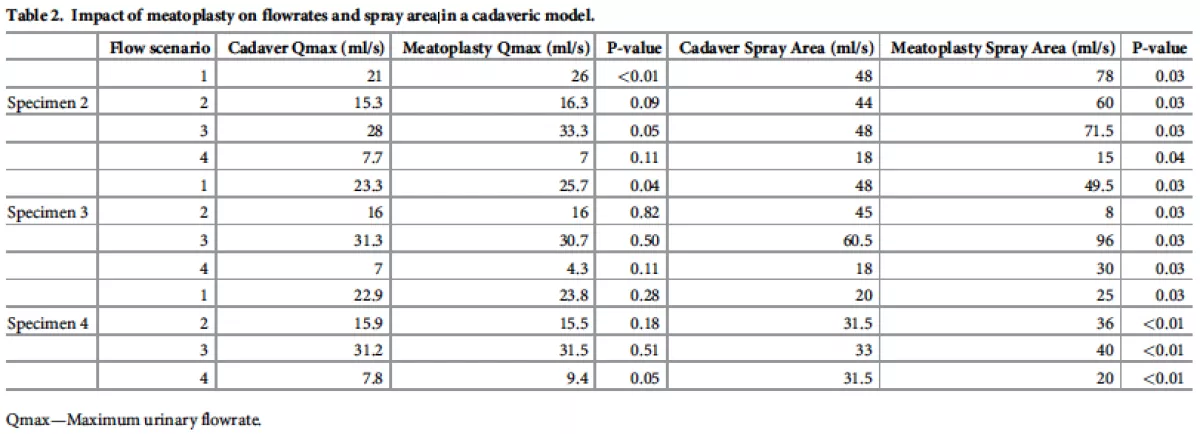Novel measurement tool and model for aberrant urinary stream in 3D printed urethras derived from human tissue (PDF)
PLOS One. Published: November 11, 2020

Background: An estimated 10% of male adults have split or dribbled stream leading to poor hygiene, embarrassment, and inconvenience. There is no current metric that measures male stream deviation.
Objective: To develop a novel method to measure spray in normal and abnormal anatomical conformations.
Design, setting, and participants: We developed a novel platform to reliably describe spray. We used cadaveric tissues and 3D Printed models to study the impact of meatal shape on the urinary stream. Cadavericpenile tissue and 3D printed models were affixed to a fluid pump and used to simulate micturition.Dye captured on fabric allowed for spray detection.
Outcome measurements and statistical analysis: Spray pattern area, deviation from normal location, and flowrates were recorded. Computational fluid dynamic models were created to study fluid vorticity.
Results and limitations: Obstructions at the penile tip worsened spray dynamics and reduced flow. Ventral meatotomy improved flowrate (p<0.05) and reduced spray (p<0.05) compared to tips obstructed ventrally, dorsally or in the fossa navicularis. 3D models do not fully reproduce parameters of their parent cadaver material. The average flowrate from 3D model was 10ml/sec less than that of the penis from which it was derived (p = 0.03). Nonetheless, as in cadavers, increasing obstruction in 3D models leads to the same pattern of reduced flowrate and worse spray. Dynamic modeling revealed increasing distal obstruction was correlated to higher relative vorticity observed at the urethral tip.
Conclusions: We developed a robust method to measure urine spray in a research setting. Dynamic 3D printed models hold promise as a methodology to study common pathologies in the urethra and corrective surgeries on the urine stream that would not be feasible in patients. These novel methods require further validation, but offer promise as a research and clinical tool.




